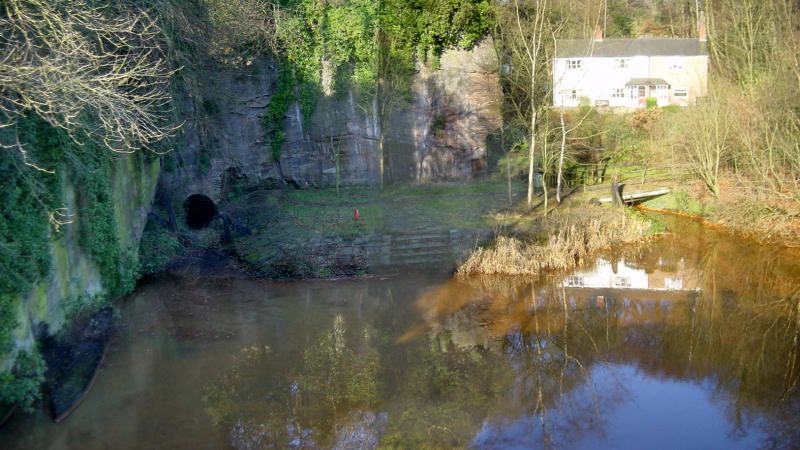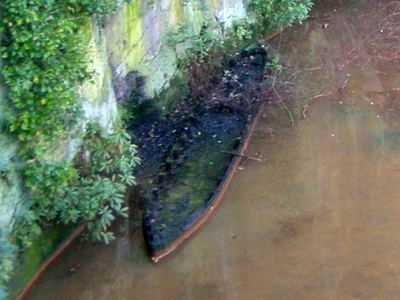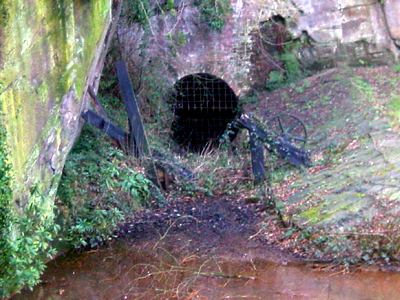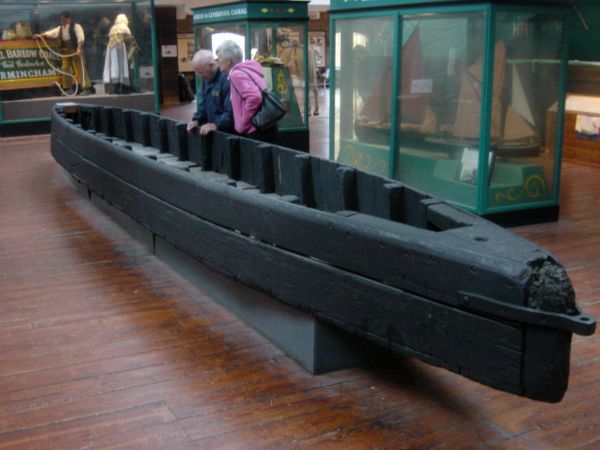The Bridgewater Canal was built because of the Duke of Bridgewater's coal mines at Worsley. The coal seams ran under the higher ground to the north. The Duke's land agent, John Gilbert, saw that it was possible to connect the canal directly to the mines by way of an underground canal. This in turn could be used to help with draining the mines, providing a source of water for the canal.
The underground canal was constructed from Worsley Delph, an old sandstone quarry near Worsley Brook. At one time a million tons of coal a year passed through this tunnel. To relieve congestion a second tunnel was constructed which met with the original about 500 yards in.
Around 47 miles of underground canals were constructed, on four different levels, connected by a water powered inclined plane and lifts. The main tunnels stretch as far north as Farnsworth, with side tunnels running at right angles along the coal seams.
Specially designed boats were used in the tunnels. These were only four and a half feet wide with protruding ribbed sides and so were given the nickname of "starvationers". These were loaded with coal at the coal face, were hauled from level to level on the inclined plane and brought the coal out onto the canal. The remains of one of these boats is seen near the entrance to the tunnels at Worsley Delph.

Worsley Delph on the Bridgewater Canal.
 The remains of one of the boats used in the underground canal. |
 One of the entrances to the underground canal leading to the mine workings. |

An example of a starvationer boat is on display at the Boat Museum, Ellesmere Port.

Bridge near the Packet House leading from the Bridgewater Canal to Worsley Delph.